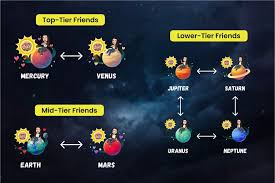BSF List Planets: A Guide to Our Solar System and Beyond
The BSF List of Planets is a reference that refers to various planets, both within our solar system and beyond, categorized based on scientific observations and studies. These include both known planets and exoplanets (planets outside our solar system) that have been observed, classified, and analyzed for their unique characteristics.
In this guide, we’ll explore the BSF List planets in depth, offering insights into their positions, characteristics, and fascinating discoveries. Whether you’re an astronomy enthusiast or just curious about the latest space findings, this post will give you a comprehensive understanding.
What Are BSF List Planets?
The term BSF List Planets typically refers to a curated list of planets that have been studied or identified by the BSF (Bharatiya Space Federation), an organization that focuses on space exploration and astronomy within India. The list includes planets from our solar system as well as a selection of exoplanets discovered through various space missions and telescopic observations.
BSF List Planets may include:
- The Planets in Our Solar System
- Mercury
- Venus
- Earth
- Mars
- Jupiter
- Saturn
- Uranus
- Neptune
- Exoplanets (Planets beyond our solar system)
- These are planets discovered around stars other than our sun. Many of these planets exist in the habitable zone (the Goldilocks Zone), where conditions may allow for liquid water and potential life. These include some of the most recent and exciting discoveries in astronomy.
Exploring the Planets in Our Solar System 🌍
The solar system planets are divided into terrestrial planets (Mercury, Venus, Earth, and Mars) and gas giants (Jupiter, Saturn, Uranus, and Neptune). Each planet has unique features, and studying them has helped scientists understand not only our own planet but also the potential for life elsewhere in the universe.
- Mercury: The closest planet to the Sun, Mercury is a small, rocky planet with extreme temperatures.
- Venus: Often called Earth’s twin due to its similar size, Venus has a thick atmosphere of carbon dioxide and is extremely hot.
- Earth: Our home planet, unique for its life-supporting environment, atmosphere, and liquid water.
- Mars: Known as the Red Planet, Mars has been a major focus of space exploration, with missions investigating its surface for signs of past life.
- Jupiter: The largest planet in the solar system, Jupiter is a gas giant with a famous Great Red Spot.
- Saturn: Known for its stunning ring system, Saturn is another gas giant that has captivated astronomers for centuries.
- Uranus: This ice giant has a tilted axis, causing extreme seasons, and is often overlooked in favor of its more famous neighbors.
- Neptune: The farthest planet from the Sun, Neptune is a dynamic world with strong winds and storms.
Exoplanets: The BSF List Beyond Our Solar System 🪐
The search for exoplanets has exploded in recent decades, especially with the launch of telescopes like Kepler and TESS (Transiting Exoplanet Survey Satellite). These planets are located outside our solar system, orbiting stars far away.
Some of the most exciting exoplanet discoveries include:
- Kepler-22b: This Earth-like planet lies in the habitable zone of its star, meaning it could potentially support life.
- Proxima Centauri b: Orbiting the nearest star to the Sun, this exoplanet is also in the habitable zone, making it one of the most studied exoplanets.
- TRAPPIST-1 System: This system has seven Earth-sized planets, three of which lie in the habitable zone, sparking interest in the potential for life.
With advancements in technology, the number of exoplanets continues to grow, and each new discovery brings us closer to understanding the vast and mysterious universe we inhabit.
The Importance of Studying BSF List Planets
The BSF List Planets not only provide insight into the characteristics of celestial bodies but also offer clues about the formation of planetary systems, including our own. By studying these planets, astronomers can gather important data that helps answer fundamental questions such as:
- How do planets form?
- What conditions are necessary for life to thrive?
- Are there other habitable worlds in our galaxy?
The study of planets, both in our solar system and beyond, helps shape the future of space exploration, guiding missions that aim to discover the potential for life elsewhere and the possibility of human expansion into the cosmos.
Conclusion: The Future of Planetary Exploration
The BSF List of Planets serves as a valuable resource for astronomers, researchers, and space enthusiasts alike. From the familiar planets of our solar system to the distant exoplanets orbiting distant stars, the exploration of these worlds will continue to inspire scientific discovery for years to come.
Whether studying the wonders of our own solar system or discovering new worlds in faraway galaxies, there’s no limit to what we can learn from the BSF List planets.




